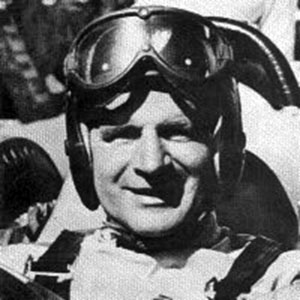Peter Broeker (born 15 May 1926 in Germany – died 4 November 1980 in Ottawa) was a racing driver from Canada.
He participated in one World Championship Formula One Grand Prix, the 1963 United States Grand Prix, driving a Stebro. He finished seventh, albeit 22 laps down, and scored no championship points. According to the Toronto Star at the time: “Broeker, first Canadian ever to compete in a world championship Formula One race in a Canadian-built car, finished seventh over-all despite giving away more than 80 horsepower to the rest of the field of 21.”
In 1973 Broeker wrote and published Olympic Coins: From Antiquity to the Present. He held US citizenship as well as Canadian. Info from Wiki
Broeker turned up at the 1963 US Grand Prix with his own F1 Stebro, powered by a pushrod Ford motor. Qualifying some 15 seconds off the pole-position time, he finished seventh, 22 laps down on the winner.
Born in near Stuttgart in Germany, Peter Broeker traveled extensively as he was growing up attending schools in South America, Europe and the United States depending on where his father’s business took him. He attended college in Nashville, Tennessee, and it was there that he first took up racing, driving stock cars in local races.
He held both US and Canadian nationality and served in the US Army. He moved to Canada in 1952 and seven years later, started Stebro Exhausts with John Stephens in Montreal. In 1961 he built 2 front engined Formula Junior cars that he and John Cannon raced that year.
In 1962 they introduced the Stebro Mk IV and it was this car that formed the basis of his Formula One ambitions. He installed a Ford 105E motor enlarged to 1500cc and fitted with a Martin head which produced 110bhp. This was Ford’s first participation in an F1 Grand Prix.
Broeker wanted to enter two cars into the US Grand Prix in 1963 and picked fellow Canadian, Ernie Devos to join him. Unfortunately the second Stebro was not ready and Ernie returned to Formula Junior with his Brabham.
In practice Broeker was more than 15 seconds off the pace and qualified last. He did not endear himself to the rest of the grid by depositing oil on the circuit during qualifying though the ATS team who had become butt of many a pit-lane jokes were pleased that for once there was someone else to laugh at. In the race Broeker actually finished a distant seventh, mainly due to attrition, 22 laps down.
In 1964, he took an updated Stebro MkV powered by a Cosworth MAE engined to Europe to participate in the F2 championship. However the car was hopelessly uncompetitive, though he did finish 12th (but unclassified) on aggregate in the Berlin GP at Avus. After just three races, after the Reims GP, he withdrew and returned to Canada.
He continued to compete with the Stebro in local races. In 1968 he crashed at St Jovite and for 1969 he switched to a Chevron B17C which brought him some success in Formula B.
He won a race in 1970 at Westwood and remained loyal to Chevron as he graduated into Formula Atlantic with a B27. He had a big accident in testing at Edmonton at the start of 1975 and only ran two races late in the year. He carried on racing Atlantic into 1976 driving a March 74B.
A noted coin collector he wrote a book ‘Olympic Coins: From Antiquity to the Present’ which was published in 1973.
He died after a short fight against cancer in 1980.

Peter Broeker came to Canada with his family after World War 2 and started an automotive repair business in Hamilton, Ontario. While there he enjoyed taking in the stock car scene and probably dabbled a bit in the roundy-round racing. He moved to Montreal in the fifties and opened the Stebro Garage. More importantly to our story, when he moved to Montreal, he discovered the flourishing sports car culture there, and got hooked on racing, and more specifically, hooked on single seat formula car racing. Somewhere along the line he began supplying the sports car crowd with customized exhaust systems to improve performance, and pretty soon that business took precedence over the automotive repair shop.
more here 1963 STEBRO MK. IV




